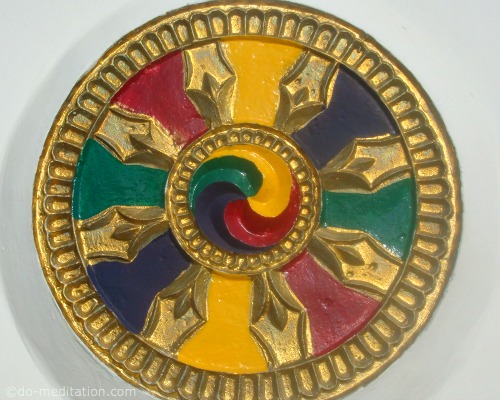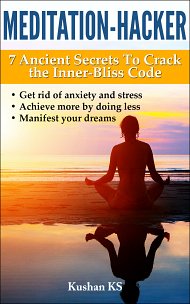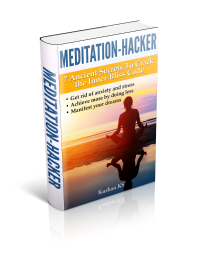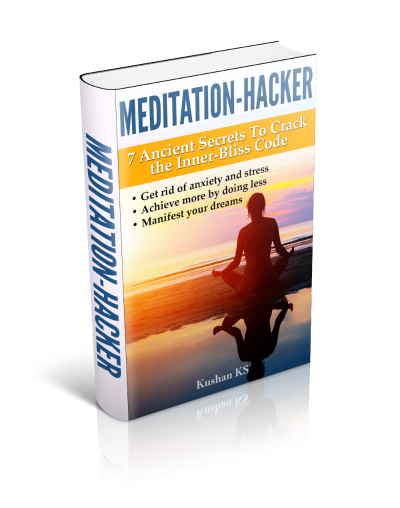Pragya or Panna - Insight into Body and Mind
"All sankharas are impermanent. When you perceive this with true insight, then you become detached from suffering; this is the path of purification" - Buddha

Pragya or Panna means wisdom.
The earlier two precepts of sila and samadhi cannot by themselves offer final liberation.
While sila serves as the foundation and samadhi as the four walls, without the roof of pragya one can't hope to erect a 'house of meditation' in one's life.
Sila is the guideline on moral conduct, which all religions and philosophies speak of in some form and manner. The individual details may be different, but the underlying rationale of all is similar.
Samadhi leads to mental states of deep absorption.
These can sometimes be loosely translated as the 'ecstasy' experienced by religious mystics.
But samadhi or right concentration alone also can't do the job since it works only at the conscious level of the mind leaving the larger and much more powerful subconscious mind unaffected.
The subconscious mind, due to its prior conditioning, continues to become a cause for future suffering.
The craving and aversion generated at this level of the mind continue unabated, irrespective of the samadhi at the conscious level of the mind.
To remove these deep-seated roots of suffering, Buddha found the path of Panna or Pragya (wisdom) to deal with the impurities of mind at the subconscious level.
Two parts of the noble eight fold path are included in Pragya or Panna:
- Right thought
Contrary to what most people expect, meditation is not about stopping thoughts.
Thoughts remain, sometimes coming in rapid succession and sometimes sporadically, but what is important is to sustain awareness from moment to moment.
Slowly, the thought pattern is replaced by the awareness of breathing.
The mind becomes tranquil and that is enough to start the work.
- Right understanding
Hearing or knowing the truth is not enough.
To understand the truth completely, we must realize it ourselves.
Pashyana or passana means 'seeing' and vipassana refers to a special kind of seeing - observation of the reality within oneself.
Vipassana is often described as a flash of insight, a sudden intuition of truth, but meditators need to follow a step-by-step method to advance to the point where they are capable of such intuition.
So, what is this reality within?
It is nothing but the sensations occurring constantly within our physical body.
The systematic and dispassionate observation of sensations within oneself unfolds the entire reality of mind and body.
Where do the sensations come from?
Reality is only that which comes into contact with our five senses or our mind. And every time anything comes into contact with these six sensory bases, a sensation occurs.
For the contact to be experienced as pleasant, a pleasant sensation arises, for it to be experienced as unpleasant, an unpleasant sensation arises, and for it to be experienced as neutral, a neutral sensation arises.
The contact of an object with mind or body produces a spark of sensation. This sensation is the link through which we experience the world with all its phenomena.
For experiential wisdom to develop in us, we must become aware of these sensations first.
Similarly, when mental objects - thoughts, ideas, feelings, memories, imaginations, anger, hope, fears - come into contact with the mind, physical sensations arise.
Every activity of the mind is inevitably accompanied by a corresponding sensation within the body.
Therefore, by watching the sensations, we also witness the mind.
Both the outside and the inside worlds are experienced through sensations in our body.
How does one witness the sensations?
In our daily life, the conscious mind lacks the necessary focus to be aware of the different sensations arising in the body, except for the most intense ones.
But, once the mind is sharpened through the practice of anapana-sati (watching of breath), we start experiencing the reality of every sensation within.
To witness the sensations in a systematic manner is called vipassana-bhavana.
The way to do it is by moving attention from head to feet and feet to head, covering every single square inch of the body.
Without looking for any particular kind of sensation nor avoiding any other kind, simply witnessing whatever takes place in the moment.
In the beginning, we may only be able to perceive sensations in some parts of the body and not in others. This is because the faculty of awareness is not fully developed, and only the intense sensations can make themselves felt.
We miss the subtler sensations, but we continue moving our attention throughout the body taking note of the sensations that are clearly evident.
The practice of Samadhi or right concentration done earlier enables us to fix our attention on an object of conscious choosing.
We make use of this ability to move awareness in an orderly progression through the body, neither lingering on a pleasant sensation nor avoiding an unpleasant sensation or ignoring an area where sensation may be absent.
Gradually, a stage is reached where we experience sensations in every part of the body.
What obstacles lie in our path?
Naturally, both our mind and body vehemently revolt against the threat to their independence imposed by this new discipline impressed upon them, and one often experiences gross, intense, unpleasant sensations that seem to last for a long time.
Strong emotions and long-forgotten thoughts or memories usually arise, bringing with them mental or physical discomfort, even pain.
Hindrances of craving, aversion, sluggishness, agitation and doubt may also raise their head and gain such strength so as to make any further progress impossible.
Faced with such an adverse situation the meditator takes the awareness back to respiration to again calm the mind.
It is important not to concede defeat and patiently continue working with the vipassana bhavana, understanding that these difficulties are actually the results of our initial success.
Deeply buried conditioning is now stirred up and starts appearing at the conscious level.
With sustained effort, these too pass away, and the mind regains its tranquility and one-pointedness, and returns to the awareness of sensations.
In due course, the intense sensations dissolve into more uniform, subtler ones and finally into mere vibrations, arising and falling with great rapidity.
The goal or objective is not to start craving for these subtler vibrations, mistaking them as a yardstick for progress, but to simply observe whatever sensations arise with an equanimous mind.
As we persevere in meditation, the realization dawns that all sensations are ever changing and impermanent (anicca).
Changes are occurring in every part of the body, and every moment the mental functions appear and disappear.
We experience the reality of impermanence directly within the framework of the body.
Every particle of the body (quantum physics has shown that sub-atomic particles constantly arise and pass away), every process of the mind is in a state of constant flux.
There is nothing that remains beyond a single moment, no hard core to which one can cling, nothing that one can call "I" or "me" or "mine."
Another realization dawns - anatta - lack of an "I" or ego or self. One sees that there is no immutable core, no essence that remains independent of the processes, nothing that is exempt from the law of impermanence.
There is only an impersonal phenomenon, changing beyond one's control.
Finally, one understands that any effort to hold on to something saying that "This is I, this is me, this is mine" is bound to make one unhappy, because sooner or later, this something to which one clings passes away, or else this "I" passes away.
Attachment to what is impermanent, transitory, illusory and beyond one's control is suffering, dukkha.
How can we free ourselves of suffering?
By developing awareness and equanimity.
The root cause of suffering is ignorance. Ignorance of reality, whereby the mind reacts to every sensation with liking or disliking, craving or aversion.
Every such reaction creates suffering now and sets in motion a chain of events that bring more suffering in the future.
How can one break this vicious circle of cause (our 'unconscious' reaction to external stimuli) and effect (suffering)?
One approach would be to destroy all the objects of our senses or the senses themselves, but both are pretty impossible things to do.
As long as the senses and their respective objects exist, there is bound to be contact between the two, which will result in a sensation.
And at this point the chain of cause and effect can be broken.
Every sensation gives rise to liking or disliking. Our mechanical, unconscious reactions to sensations get multiplied and intensified into great craving and aversion, producing misery now and in the future.
Through vipassana, we develop awareness of every sensation. And we develop equanimity.
We observe, but we do not react.
Examining the sensation dispassionately, without liking or disliking it, without craving, aversion or attachment toward it, gives rise to wisdom, pragya or panna, insight - "This is impermanent, bound to change, arises and passes away."
As soon as the reaction of craving and aversion is stopped, the chain of cause and effect is broken, and suffering stops.
The entire effort is to learn how not to react, how not to produce a new sanskara or sankhara (impression).
When we are aware of the sensation within the body, and at the same time maintain equanimity, in those moments, the mind is free.
At first, these moments are few, but with practice, the brief moments become seconds, then minutes, until finally the old, habitual habit of reaction is broken and the mind rests continually in peace.
By practicing morality (Sila), we avoid actions that cause the grossest forms of mental agitation. By concentrating the mind (Samadhi), we further calm it and shape it into an effective tool with which to undertake the work of self-examination.
Finally by developing wisdom (Pragya), we can penetrate into the reality within and free ourselves of all ignorance and attachments.
Return from Pragya to Vipassana Meditation

Get my book, Meditation-Hacker: 7 Ancient Secrets to Crack the Inner-Bliss Code and receive valuable information on meditation that you can use to improve the quality of your health and life.


Comments
I would love to hear your meditation experiences. And, if you are a beginner, your questions and apprehensions about meditation. Comment below or contact me directly through the navigation bar on the left of this page.